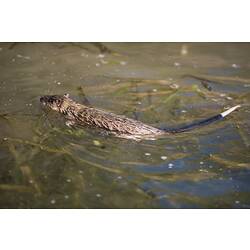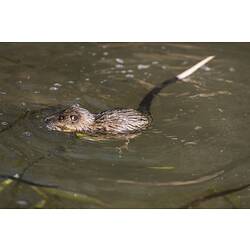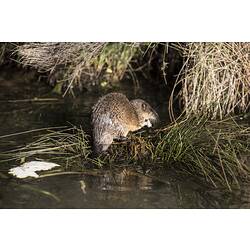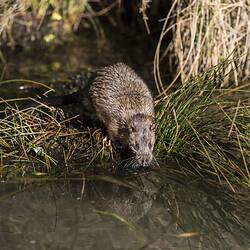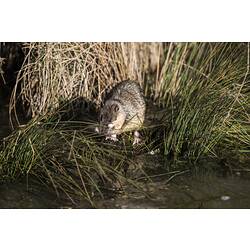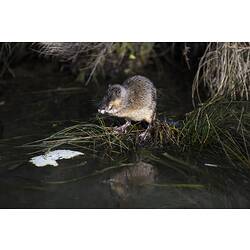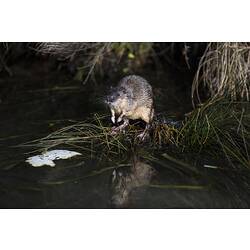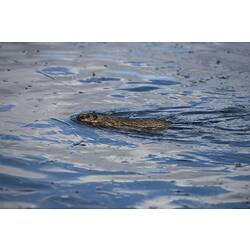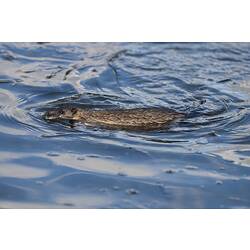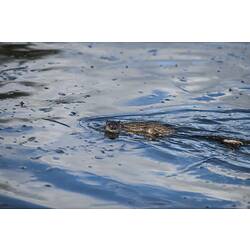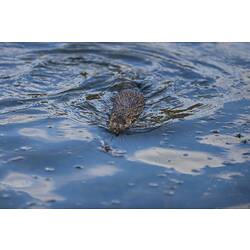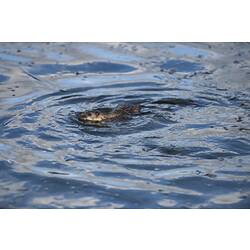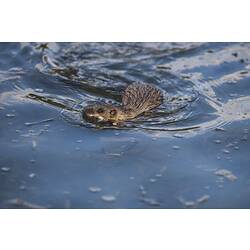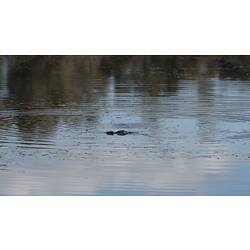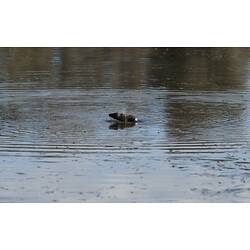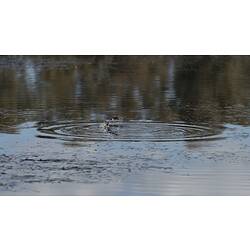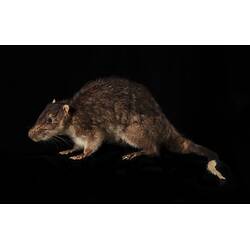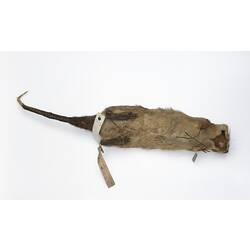General Description
Extremely dense fur, black to grey above and white to orange underneath. Tail thick and dark, white at the end. Wide, webbed hind feet. Broad face with large whiskers. Body up to 39 cm long.
Biology
Water Rats feed on a variety of primarily animal foods including fish, crustaceans, shellfish and some vertebrates. They are most active at dusk, but can be active anytime of day. A swimming Water Rat can be spotted by a V-shaped ripple in the water. They have been protected since 1938; before then they were killed as a nuisance animal and hunted for their soft fur.
Distribution
Widespread in permanent water bodies of Australia, New Guinea and offshore Islands.
Habitat
Fresh, salt and brackish permanent water bodies.
More Information
-
Animal Type
-
Animal SubType
-
Brief Id
A large rat with a thick white-tipped tail that swims in water with its webbed hind feet.
-
Colours
Brown, Black, Yellow
-
Maximum Size
39 cm
-
Habitats
-
Where To Look
-
When Active
Nocturnal, Diurnal
-
Diet
Carnivore
-
Diet Categories
Invertebrates, Fish, Frogs
-
Endemicity
-
Commercial
No
-
Conservation Statuses
CITES: Not listed, FFG Threatened List: Not listed, EPBC Act 1999: Not listed, IUCN Red List: Least Concern
-
Taxon Name
-
Scientific Author
É. Geoffroy, 1804
-
Common Name
Australian Water Rat
-
Other Names
Rakali , Common Water Rat , Golden-bellied Water Rat
-
Kingdom
-
Phylum
-
Subphylum
-
Class
-
Order
-
Suborder
-
Infraorder
-
Superfamily
-
Family
-
Subfamily
-
Genus
-
Species Name
chrysogaster

